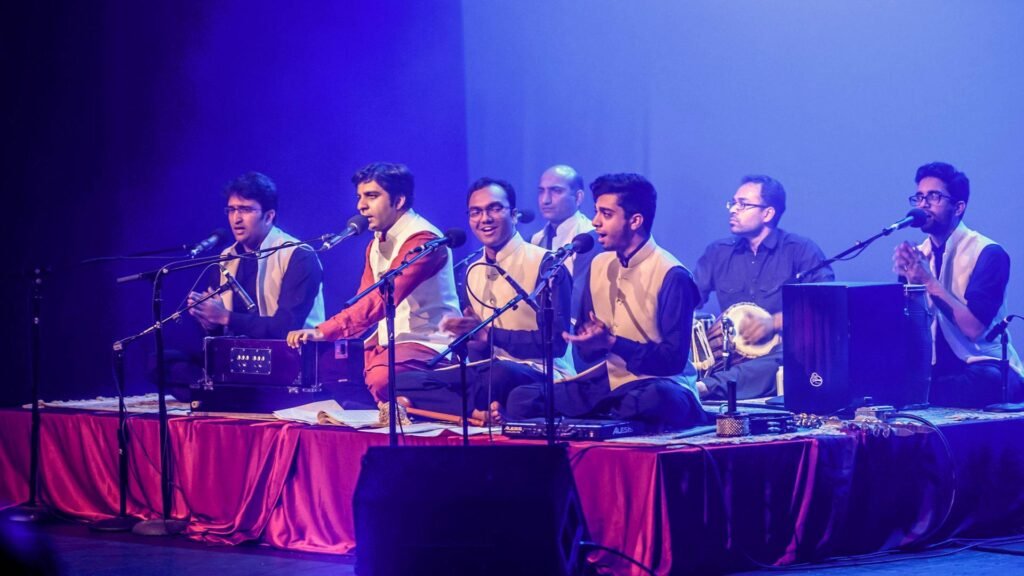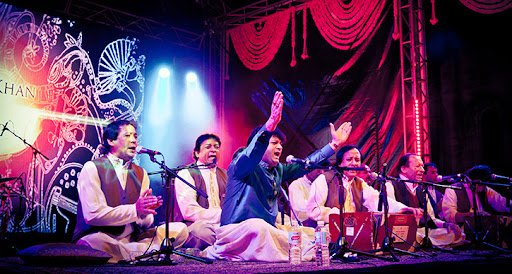Indian music, with its diverse and rich traditions, encompasses a wide array of genres and forms. Among these, ghazals and qawwalis stand out for their profound emotional depth and historical significance. Both forms have played a crucial role in shaping Indian music and culture, each with its unique characteristics and appeal. This article delves into the legacy of ghazals and qawwalis, exploring their origins, evolution, and continued influence on Indian music.
Origins and Historical Context
**1. The Birth of Ghazals
Overview: The ghazal is a form of poetry and music that originated in Persia (modern-day Iran) and was later adopted and adapted by Indian musicians and poets.
Historical Significance:
- Persian Roots: Ghazals began as poetic expressions in Persian literature, characterized by themes of love, loss, and longing.
- Introduction to India: The form was introduced to India during the Mughal era, where it evolved to reflect the linguistic and cultural diversity of the Indian subcontinent.
Examples:
- Mirza Ghalib: A renowned Persian and Urdu poet whose ghazals are celebrated for their lyrical beauty and depth.
- The Mughal Influence: The Mughal courts played a significant role in the popularization and evolution of ghazals in India.

**2. The Origins of Qawwali
Overview: Qawwali is a form of Sufi devotional music that originated in the Indian subcontinent, combining poetry, music, and dance to express spiritual devotion.
Historical Significance:
- Sufi Mysticism: Qawwali has its roots in Sufi traditions, aiming to achieve a spiritual connection through music and lyrics.
- Development in India: It was further developed in India, particularly in the context of Sufi shrines and gatherings, blending local musical styles with Sufi poetry.
Examples:
- Hazrat Amir Khusro: Often credited with the development of qawwali, Khusro’s compositions are foundational to the genre.
- The Sufi Tradition: The role of Sufi saints and their teachings in shaping the qawwali tradition.
Evolution and Adaptation
**1. Ghazals Through the Ages
Overview: Over the centuries, ghazals have evolved, incorporating various linguistic and musical influences while maintaining their core themes of love and longing.
Evolutionary Milestones:
- Classical Period: Early ghazals were performed in classical settings, often accompanied by instruments such as the sitar and tabla.
- Modern Era: In the 20th century, ghazals became popular in film music and modern recordings, with artists like Jagjit Singh and Ghulam Ali bringing a contemporary touch to the form.
Examples:
- Jagjit Singh: Known for popularizing ghazals in modern Indian music.
- Film Industry: Ghazals featured in Bollywood and other Indian films, reaching a broader audience.
**2. The Evolution of Qawwali
Overview: Qawwali has seen various changes over time, influenced by regional musical styles and modern innovations while retaining its spiritual essence.
Evolutionary Milestones:
- Traditional Performance: Originally performed in Sufi shrines and gatherings, qawwali was characterized by its call-and-response format and devotional themes.
- Contemporary Influence: Modern qawwali has incorporated contemporary musical elements and reached global audiences through artists like Nusrat Fateh Ali Khan and Rahat Fateh Ali Khan.
Examples:
- Nusrat Fateh Ali Khan: A legendary figure in qawwali who introduced the genre to international audiences.
- Global Appeal: The influence of qawwali on world music, including collaborations with Western musicians.
Cultural and Social Impact
**1. Ghazals and Their Cultural Resonance
Overview: Ghazals have deeply influenced Indian culture, from literature and poetry to film and television.
Cultural Impact:
- Literary Influence: Ghazals have inspired numerous poets and writers, contributing to the rich literary heritage of Urdu and Persian literature.
- Media and Entertainment: The incorporation of ghazals in films, television, and radio has made them accessible to a wide audience.
Examples:
- Ghazal-Based Films: Movies like Umrao Jaan and Bazaar feature ghazals that enhance their emotional depth.
- Popular Radio Shows: Radio programs dedicated to ghazals, such as Ghazal Ke Rang.
**2. Qawwali’s Role in Social and Spiritual Life
Overview: Qawwali has played a significant role in the social and spiritual lives of communities, serving as a medium for expressing devotion and connecting with the divine.
Social Impact:
- Spiritual Gatherings: Qawwali performances are central to Sufi rituals and gatherings, fostering a sense of community and spiritual connection.
- Cultural Celebrations: Qawwali is performed at various cultural and religious festivals, contributing to the vibrancy of communal celebrations.
Examples:
- Annual Urs Festivals: Qawwali performances are a highlight of the Urs festivals held at Sufi shrines across India.
- Cultural Programs: Qawwali performances in cultural festivals and events, such as the Jahan-e-Khusro festival.
Legacy and Continuing Influence
**1. Preservation and Revival of Ghazals
Overview: Efforts to preserve and revive ghazals continue through recordings, performances, and educational initiatives.
Preservation Efforts:
- Classic Recordings: The preservation of classic ghazal recordings and the documentation of traditional performance styles.
- Educational Programs: Workshops and courses focused on the art of ghazal singing and composition.
Examples:
- Ghazal Festivals: Events dedicated to celebrating and preserving the ghazal tradition.
- Educational Institutions: Institutions offering specialized programs in ghazal music and poetry.
**2. The Global Reach of Qawwali
Overview: Qawwali’s influence extends beyond the Indian subcontinent, with performances and recordings reaching a global audience.
Global Influence:
- International Collaborations: Collaborations between qawwali artists and musicians from various genres and countries.
- Global Performances: Qawwali performances at international music festivals and cultural events.
Examples:
- Collaborations with Western Artists: Projects involving qawwali artists and Western musicians, such as those with Peter Gabriel.
- International Music Festivals: Qawwali performances at festivals like the WOMAD Festival.
Conclusion
The legacy of ghazals and qawwalis in Indian music is a testament to their enduring appeal and cultural significance. Both forms have enriched Indian musical traditions with their unique styles, themes, and emotional depth. As they continue to evolve and inspire new generations of artists and audiences, ghazals and qawwalis remain central to the vibrant tapestry of Indian music and culture.
Their influence extends beyond the boundaries of India, reaching global audiences and contributing to the global appreciation of Indian musical heritage. The continued exploration and celebration of ghazals and qawwalis ensure that their legacy endures, resonating with people around the world.

